
Back on Monday, March 4th. Resting this weekend. See you all then. Be well.

Back on Monday, March 4th. Resting this weekend. See you all then. Be well.
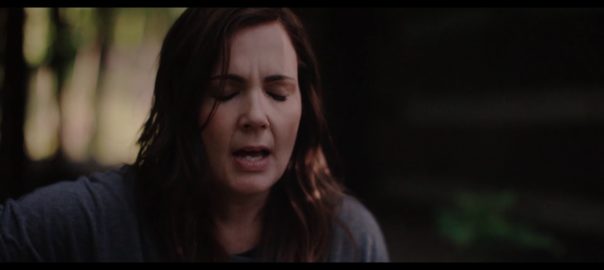
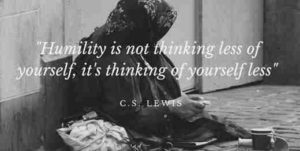
In the era of Donald Trump and Pierre Poilievre, humility has become so out of fashion as to almost have been forgotten. Nonetheless, it is worth articulating why humility is an essential attribute of civic life.
Genuine humility and good governance is defined by grace and an intense interest in the lives of others. The perspective of the public, our neighbours, must always be taken into account in the taking of decisions in the public realm.
In the fabric of democracy, humility will always stand as a cornerstone that fortifies the integrity and efficacy of electoral processes and the governance that ensues.

At the municipal level, where governance directly touches the lives of citizens in their communities, the significance of humility becomes even more pronounced.
Humility plays a critical role in the electoral process and among elected officials at the civic level, in fostering trust, co-operation, and effective leadership.

If we in Vancouver have suffered in the civic domain for most of the past quarter century, bereft of an otherwise recommendable civic administration of conscience, the central failure of governance in our city has occurred as a consequence of an unremitting arrogance, and a certitude that what is being done is right and in the collective interest, whether or not community consensus has been achieved.
Humility in the electoral process serves as a linchpin in maintaining the democratic ideals of fairness and equality.
Municipal elections are the bedrock of local democracy, where individuals come together to choose representatives who will voice their concerns, make decisions, and shape policies that directly impact our day-to-day lives.
Humble candidates prioritize the needs and aspirations of their constituents over personal ambitions, engaging in genuine dialogue and actively listening to the diverse voices within their communities. They eschew grandstanding and instead focus on authentic connections and constructive discourse, thereby fostering an electoral environment that is characterized by respect, civility, and inclusivity.
Once elected, those persons who are elected to City Council, Park Board or School Board bear the weighty responsibility of representing the interests of their constituents, while navigating the complexities of policy making and administration.
In this capacity, humility serves as a guiding principle that grounds officials in a recognition of their fallibility and the limitations of their knowledge.

Humble leaders understand that they do not possess all the answers and thus remain open to diverse perspectives, expertise, and feedback from both constituents and fellow stakeholders.
By embracing humility, elected officials cultivate an environment of collaboration and collective problem-solving, transcending partisan divides and fostering innovative solutions to the myriad challenges facing their communities.
Furthermore, humility engenders trust and credibility among constituents, essential elements for the legitimacy of municipal governance.
In an era marked by heightened skepticism towards traditional institutions, humility offers a powerful antidote to the erosion of public trust in government.

Humble leaders prioritize the common good over personal gain, earning the respect and admiration of their constituents through their humility, authenticity, and commitment to serving the public interest.
The challenges confronting municipalities require leaders who possess the humility to acknowledge the complexity of these issues and the willingness to collaborate with diverse stakeholders to address them effectively.
Fostering trust and cooperation to promoting effective leadership and governance, humility serves as a guiding principle enriching the fabric of local democracy.

Let us be very clear here: we as a voting public in Vancouver do not want more arrogance in civic governance of our city.
We do not want holier-than-thou elected civic officials, whether they are with the so-called “progressive coalition” or the nominally right-of-centre ABC Vancouver civic party dictating what is best for us, and ignoring our voices. We’ve had a quarter century of that, and that is more than enough.
In Vancouver, to be a respected, successful and admired politician, one must know what one stands for and what one is fighting for, to know how to work with others, to listen to the public and be a voice for change for the better.
If you’re an elected official, you better darn well listen to the public, bring them along with you, and not find yourself sitting back on your high horse telling the public …
“Oh, deary, I know what’s best for you. Oh sure, I know you think you know what’s best for you, but believe me, I know better than you what’s good for you. Just trust me. And even if you don’t trust me, I’m going to go ahead and do what I damn well please, anyway.”
That’s a recipe for electoral disaster, and a very pissed off public — and if you’ve got any caring, compassion and humility at all, you don’t want that.
Take heed elected officials. Should you fail to do so, you proceed at your peril.
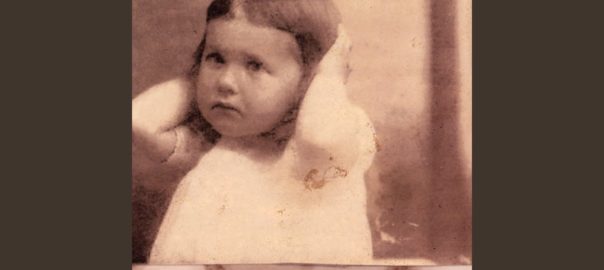
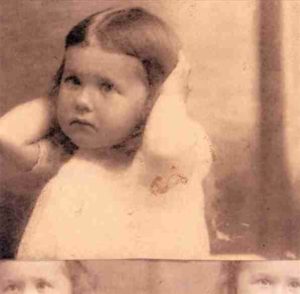
Dream pop duo Azure Ray — composed of Orenda Fink and Maria Taylor — employ graceful harmonies, patient folksy song structures, and touches of electronic production to create otherworldly songs that balance tranquility and intensity.
The pair met at the age of 15 while attending the Alabama School of Fine Arts in Birmingham. Together, they fronted a band called Little Red Rocket, which released two CDs, Who Did You Pay (1997) and It’s in the Sound (2000), with the band breaking up shortly after the release of the latter album.
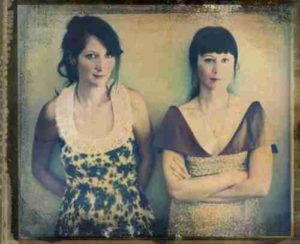
Orenda Fink and Maria Taylor decided to head out to Athens, Georgia, striking out to find a career, forming Azure Ray soon after arrival in their new home.
“My boyfriend had just died and we had written all of these songs that were helping us cope with everything. We had a night where all of our friends and family got together. We played those songs, which later would turn into the songs on our first Azure Ray record, which we released shortly thereafter,” says Taylor.
Their self-titled début album is a quiet, gentle set of lovely and soul-searching songs that incorporate elements of folk, pop, and light electronica.
Following the unexpected death of Taylor’s boyfriend, the two musicians used songwriting as a method of coping with their grief. The intensity of that loss informed the mournful tone of the group’s earliest work in 2001, and would carry through in their sound to some degree from that point on.
The song Sleep was later featured in the 2006 Academy Award-nominated movie The Devil Wears Prada, featuring Anne Hathaway. In February 2015, Taylor Swift included Sleep on a six-song “breakup playlist” made for a fan via her official Tumblr account.
Camilo Arturo Leslie in Pitchfork had this to say about the début album …
Their album cover is simple: just an old, sepia-toned photograph of a little girl. She looks like my grandmother as a child. Nostalgia and melancholy rub off the liner notes and stain your fingertips. The little girl clutches her palms to her ears and wears an inscrutable expression that vacillates from pouty to fearful to verge-of-tears, depending on what mental angle you hold it at.
Azure Ray’s indie music aesthetic is built on pretty, easy-on-the-tympanum pop acoustic guitar strumming. No fuzz, no indigestible chords, just polished production and evocative arrangements. Lap steel guitar, cello, violin, church bells, piano, brass, and tape loops make appearances on these 11 tracks.
The draw of their music is, of course, the duo’s vocals, Azure Ray’s gentle trills offering a haunting balance between the ethereal and corporeal, as well as an understated, yet distinct feminine strength, not unlike the early music of Linda Ronstadt.
Indie label-ghetto obscurity has kept Azure Ray from attaining massive popularity.
But an indie-ghetto habitué such as yourself shouldn’t have any trouble digging up a copy of Azure Ray’s début CD, or maybe a vinyl copy.
Red Cat Records on Main Street, or Zulu Records on West 4th Avenue, if they don’t have it in stock, could certainly order it for you.
Beautiful, expertly crafted pop songs keep a room in your heart’s hotel (under an assumed name, naturally).
You could also listen to Azure Ray on Spotify, or Apple or Amazon Music, or purchase their music from either of the two latter providers of digital music.
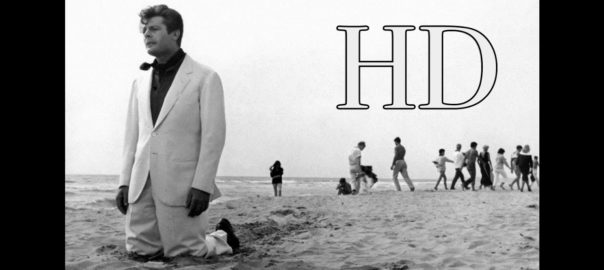
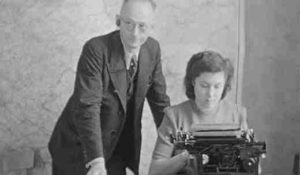
My aunt Freda was a vagabond, but a vagabond who typed at 80 words a minute, and took shorthand at up to 120 words a minute — her stenographic skills much in demand across all of Canada, for many many years.
For 50 years, my aunt traveled the country — there was no city or medium-sized town where she didn’t work, and given her skill set, jobs were easy to come by, references at the ready from previous employers.
My aunt would work two or three jobs a year for two to three months each time — in St. John’s Newfoundland (the only place she ever worked twice), Regina, Edmonton, Hamilton, Windsor, Saskatoon, Halifax and Victoria.
My aunt Freda would write to me from these far flung places across Canada where she’d taken employment, promising always to return in “just a few weeks.”

Vancouver’s crown jewel, the 1000 acre Stanley Park, the photo above taken in 1958
Throughout my young life, my primary caregiver was my aunt Freda.
Given that my mother, almost throughout the entirety of my life, worked three jobs at the same time, 16 hour days six days a week and a 24-hour day on the seventh day, I rarely saw her, she simply wasn’t a presence in my life or in my home, with the exception of summer, when we — my sister, my mother and I — would travel for a two-week vacation to wherever my aunt was located.
During the first 10 years of my life, my Aunt Freda cared for my sister and I, fed us, bathed us, took us to Stanley Park in the years we lived in Vancouver, took us on summer vacations, made sure that we enjoyed ourselves, and would learn about the world during the days, weeks and months that she cared for us, and otherwise provide love for the both of us.
Generally, my aunt would stay in our family home three times a year, sometimes more, for an average of six weeks on each visit.
In fact, my Aunt Freda was the only person who ever told my sister and I that she loved us. My father didn’t do that or even hint at it, love seeming to be a word not in his vocabulary, and most certainly my mother never told my sister and I that she loved us — although I think she showed it in many ways — and neither did anyone other than my Aunt Freda.
Aunt Freda was, for all intents and purposes, my mother — that’s the role she chose to play.
I was her favourite — any depth of insight into life, I gained from her.
Our conversations lasted hours — she wanted to introduce me to the world, to make me aware of my environment, to help me to see that I was part of a human collective of those who lived around me, and as the years went by, farther afield, as she helped me to see that I was part of the world community.
In the summer months, as I write above, my mother, sister and I would travel to whichever western Canadian city she was working in — in the summer, she always took employment in an easily accessible by rail western Canadian city .
My mother, sister and I would stay with her in her small, one-room “apartment” (more like a tiny hovel, but still), in order that we might attend Klondike Days in Edmonton, or the Calgary Stampede, or the Red River Exhibition in Winnipeg, or whichever town had a fair that summer that my aunt felt was recommendable and worthy of my family — always sans my father — visiting and staying with her, always enjoying our truncated time together.
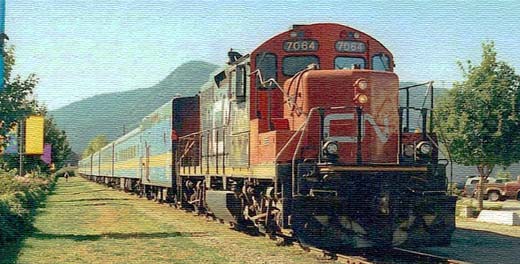
Of course, part and parcel of that was the train ride to and from whichever western Canadian city we were visiting, but that’s a story for another day.
When my family — including my father — moved to Edmonton in the summer of 1959, I spent the month of July in High River, Alberta staying with my grandfather on his massive family farm, and much of August in Lethbridge with my aunt Anne, uncle Dave and their children, my cousins, before moving into the rental home my parents had found for us in Edmonton, where I began Grade 4 in September 1959 — a fortuitous circumstance that would change my life.
In the late 1950s, Alberta had legislated an academic programme of excellence for students into which I was enrolled. In British Columbia, the province had adopted two educational streams: academic and vocational.
If you happened to live in a working class area of Vancouver, you were almost automatically streamed into the vocational programme.
When I returned to Vancouver for Grade 7, in the late summer of 1962, as I had been enrolled, and done well in Alberta’s Enterprise Programme of Excellence — as it was called at the time — upon my return to Vancouver to attend Templeton Secondary school, of all my friends with whom I had attended Grades One through Three, I was the only child / student who now found himself enrolled in the academic programme at Templeton.
I recall at the graduation ceremony in 1968, how disappointed many students were to find that graduating in the vocational programme did not make them eligible for entry into college or university, that they’d have to start all over again.
Rank class discrimination, that’s what it was plain and simple — kids came from poor families, and they’d become the “worker bees” as we were so often told while attending Templeton Secondary.
Two stories about my aunt, both of which are Edmonton-based.

Borden Park, in northwest Edmonton, at 148 acres one of the city’s largest parks
In the summer of 1960, after my family had moved to north Edmonton from the inner city, on my August 11th birthday that year, my parents had taken my sister and I down to play at Borden Park, in northwest Edmonton, not too far from where we lived, a massive green space in that area of the city, sometimes used as fairgrounds, with a community centre, tennis courts, a pool, and two outdoor pools, one for younger children, another for teenagers and adults.
The day was sunny and bright, the sky a deeper and richer blue that I can ever recall having seen prior to that date.
As it happened that year, my aunt Freda had not come to stay with us during the first seven months of the year — her services were required in St. John’s, as she found herself working on an inter-governmental project of some great import to both the province and the federal government. Of course my aunt wrote to me frequently, but beautifully handwritten letters aside, I missed the dickens out of her, and in my letters to her, I begged her to come and stay with us in Edmonton.
But it was not to be, for all the reasons she explained in her correspondences.

While playing on the park’s roundabout, along with a number of other children pushing the roundabout to go faster, despite the hot sun beating down from above, I felt a chill run through my body, a pang that was so chilling as it shot through my veins that I alighted from the roundabout, and moved away onto a quieter green space nearby, just standing there shivering, for a moment wondering what was happening to me.
Turning away from the screaming children on the roundabout I began, alone, to walk north, away from my sister. Neither my younger sister Linda nor I had seen my parents in awhile, who’d told us they had some business to attend to, that we’d be fine in their absence, and I was to take care of my sister Linda.
I continued to move north along the green grasses, at first slowly, hesitatingly, when looking off into the far distance, I saw three figures walking closely together, indefinable figures, the sun obscuring my vision, the distant figures almost apparitions, as another pang of cold shot through my body, at which point I began to run, to run faster in the direction of the three apparitions than I had ever run in my life, because I knew who the middle person of the three was, even if I could not properly see who it was.
And I began to cry, running across the green field sobbing, running as fast as I could in the northerly direction of the three figures who I could not quite make out, but I knew were my parents and my aunt, and I ran and ran and ran, tears now gushing down my cheeks on that 10th birthday summer’s afternoon in August of 1960, on a day I will never ever forget.
And when I was upon my parents and my aunt, I jumped into my aunt’s arms, wrapping myself around her, my head on her right shoulder, the two of us holding each other as tightly and closely as we could, both of us now crying, my parents standing back in wonderment, their faces lit up smiling.
Placing me back on my feet, my aunt looked at me and said, “Raymond, I have arrived in Edmonton just this day, only an hour or so ago, so that I could be here for your birthday, to take you and your parents and Linda to dinner tonight. And I have presents for you, as well, which I will give you when we return to your home, and before we go to dinner tonight.”

The presents? There were two, as promised: an Underwood typewriter that would allow me to type ever longer letters to my aunt as she found herself in some far flung location in Canada — with the facility to type easily and well, a salutary talent and much-used skill I employ to this day — the second present, a toy 8mm movie projector that both reinforced my love for film, and a device that would bring me much joy in the months to come.
Running across that green field in Borden Park on the day of my 10th birthday resides in me still as a much cherished event in my young life, making me aware, if I was not already, that there are more than three dimensions in our existence — because I knew that my aunt was in the park minutes before I saw her and ran into her arms, when she told me she loved me, as I knew she did, and as I loved her.
My aunt stayed with my family to the beginning of my Grade 5 school year at Eastglen Elementary School, after which she was off again, this time to Saskatoon, where she worked through until February, when she returned to Edmonton for three weeks, then after traveling back to Saskatoon, where my mother, sister and I would spend the better part of July 1961 with her.
In the winter of 1962, my aunt made one of her now more infrequent visits to stay with my family, my mother working three jobs still, my father working at the Post Office, my sister and I alone at night.
One near frozen mid-winter February evening, after making and serving dinner to my sister and I, a dinner almost needless to say in which a delicious salad was featured prominently in the dinner — having arranged with a neighbour for babysitting for my sister, my aunt asked me if I’d like to go to see a film with her on the south side of Edmonton, near the University of Alberta campus.
Of course, I said yes.
That evening, I saw my first foreign film, my first Fellini film, and a film that would go on to win the Best Foreign Language Film Academy Award late the very next month: La Dolce Vita, a film I fell in love with, as did my aunt, a film my aunt and I talked about all the way home on the bus, a film that began my life long love affair with sensuous European women onscreen, with foreign language & world cinema.
In all the years of my young life there was love in my life only when my aunt Freda would arrive to stay with us in our home. Not until I met Cathy in late 1969 did I feel love from anyone other than my beloved aunt Freda.
My aunt remained a fixture in my life through all the years of my attendance at university and throughout the years of my marriage, my aunt Freda the woman I look upon as my “real” mother, the mother who loved me, and cared for me, who knew me better than any other person in this world, and the person — along with each of my two children — I will always love most.